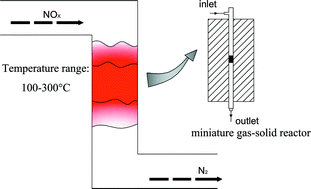A review on selective catalytic reduction of NOx by supported catalysts at 100–300 °C—catalysts, mechanism, kinetics
Abstract
Removing NOx by supported catalysts is important for industrial flue gases and exhaust fumes of diesel engines at low temperature (100–300 °C). However, it is still a challenge to develop the low-temperature catalyst (LTC) for selective catalytic reduction of NOx, especially at temperatures below 200 °C. This paper reviews the effect of the different carriers with different active centres. Most supported metal oxide catalysts are prepared by impregnation method. But under the same condition, catalysts perform better if they were prepared by sol–gel method. Also, this paper described and compared the research progress of reaction mechanism and kinetics of the supported catalysts which were used for the selective catalytic reduction of NOx at low temperature. There are different mechanisms because of the different reducing agents and active centres. The L–H and E–R mechanisms, or both of them coexisting, can explain the overall mechanism. In order to research the mechanism thoroughly, the exploration of the reactions of the surface chemical process may be a direction to develop low temperature supported catalysts for removing NOx.


 Please wait while we load your content...
Please wait while we load your content...